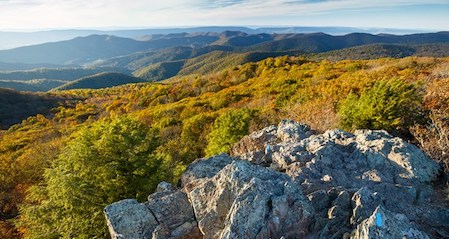
~ Submitted by the Valley Conservation Council
STAUNTON, Sept. 8 — Thirty years ago, the world was a different place than it is today. Eric L. Fitzgerald, Chair of the Board of Valley Conservation Council, describes it as “…a time of unprecedented change in our world. Germany was reunified, Poland began its exit from the Soviet Bloc, and the Hubble Telescope was launched. The World Wide Web was in its infancy and the Shenandoah Valley was experiencing growth that few residents had ever envisioned.”
Thirty years ago, a small group of forward thinkers gathered together to find ways of protecting the Valley land they loved and of preserving both its productive beauty and its resources. From their vision, Valley Conservation Council was born and, as a result, tens of thousands of acres of valuable farm and forestland, streams and rivers, and historical landscapes are now protected.
With a mission of promoting land use that sustains the farms, forests, open spaces, and cultural heritage of the greater Shenandoah Valley Region, VCC continues its work of three decades— conserving land and water, preserving working farms and forests, promoting sensible development, and protecting the health of this regional and iconic ecosystem.
Valley Conservation Council is proud to include Page County in its 11-county service area. Protecting water resources with riparian buffers offers landowners a valuable tool in guarding the quality of rivers and creeks that are beloved by those who fish and float, as well as those who hike and bike along them. Conservation easements have also protected working farms, scenic landscapes, and forests in the counties.
As an accredited land trust, VCC follows the highest legal, environmental, and financial standards in holding and promoting conservation easements which are often used to protect working farms and forests, to improve water quality by creating riparian buffers along nearby water bodies, and to guard viewsheds and corridors of natural, historic or scenic value. In addition to protecting a property in perpetuity, these easements may offer tax benefits for the landowner.
Membership in Valley Conservation Council does not require being an owner of large tracts of land under conservation easement. VCC has many members who support the educational outreach that the organization does and who want VCC to continue land conservation efforts for generations to come.
As VCC’s Executive Director, John D. Hutchinson V, described its founding, “Valley Conservation Council…still partners with landowners and others to conserve land, focusing on conservation easements. Today we all reap the rewards of seeds sown three decades ago. It is an honor to carry forward the mission of this organization in which I believe.”
Working to conserve the places we love, VCC hopes to continue to help landowners turn their visions into reality.
For more information about the work VCC does, membership, or to donate in support of VCC, please visit valley conservation.org or find Valley Conservation Council on Facebook.
•••
RELATED ARTICLES
Forest Service seeks members for Resource Advisory Committee
Tourism marketing grant to promote Luray, Page as outdoor destination
Senate passes Restore Our Parks Act, bringing $1.1 billion to Virginia



Be the first to comment